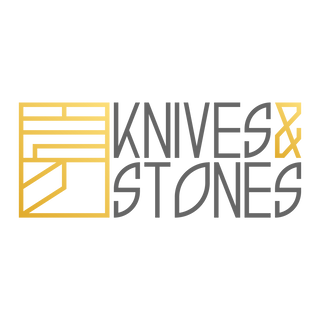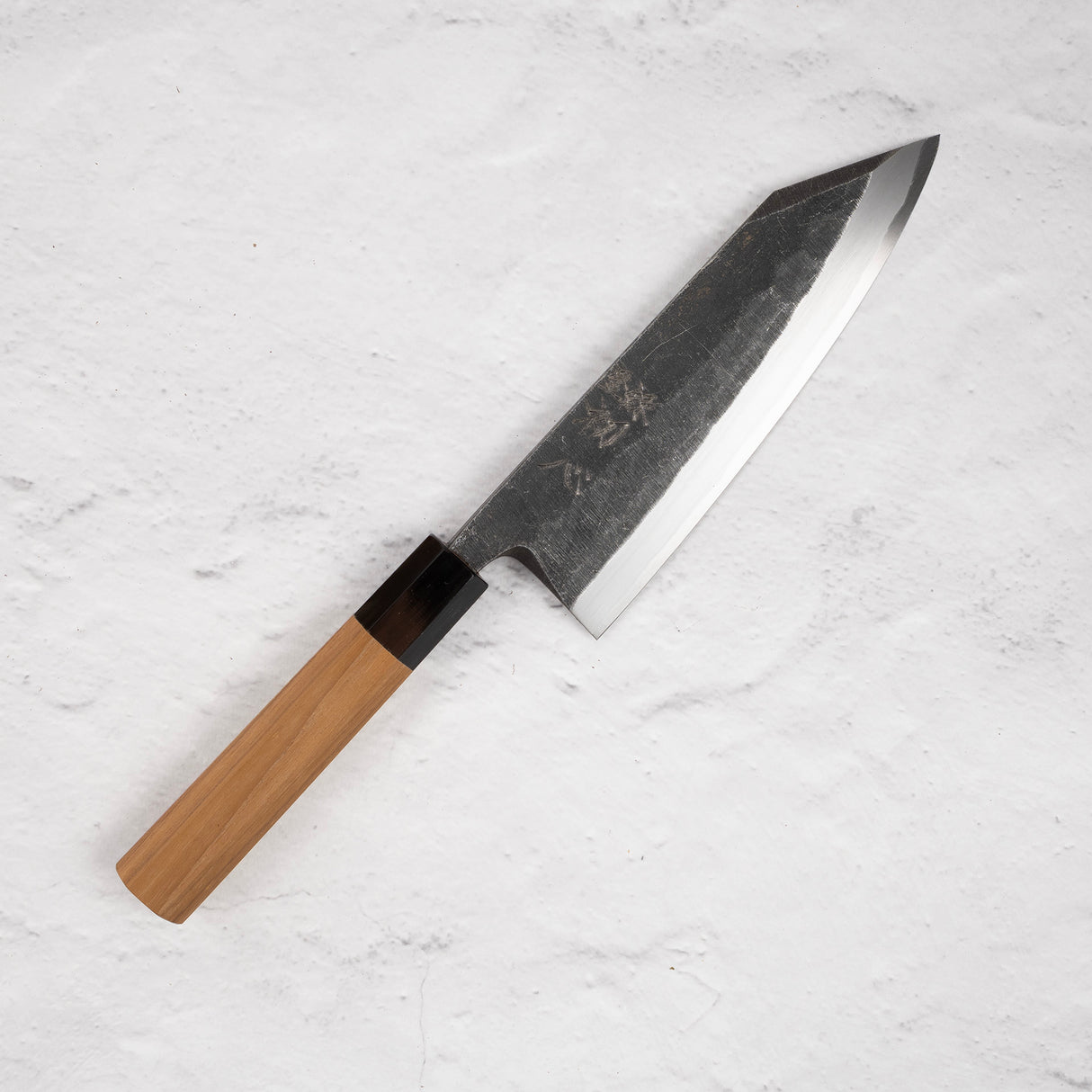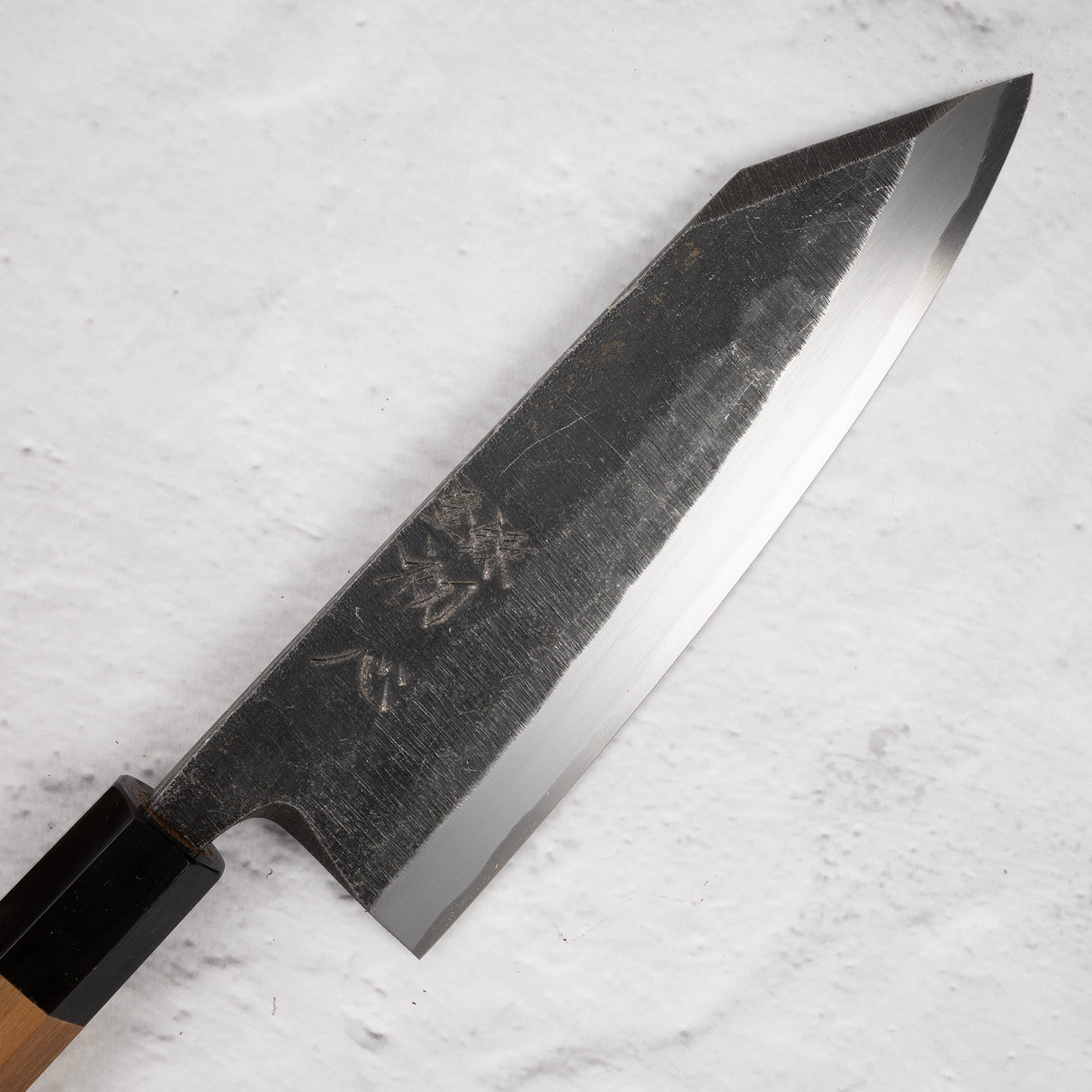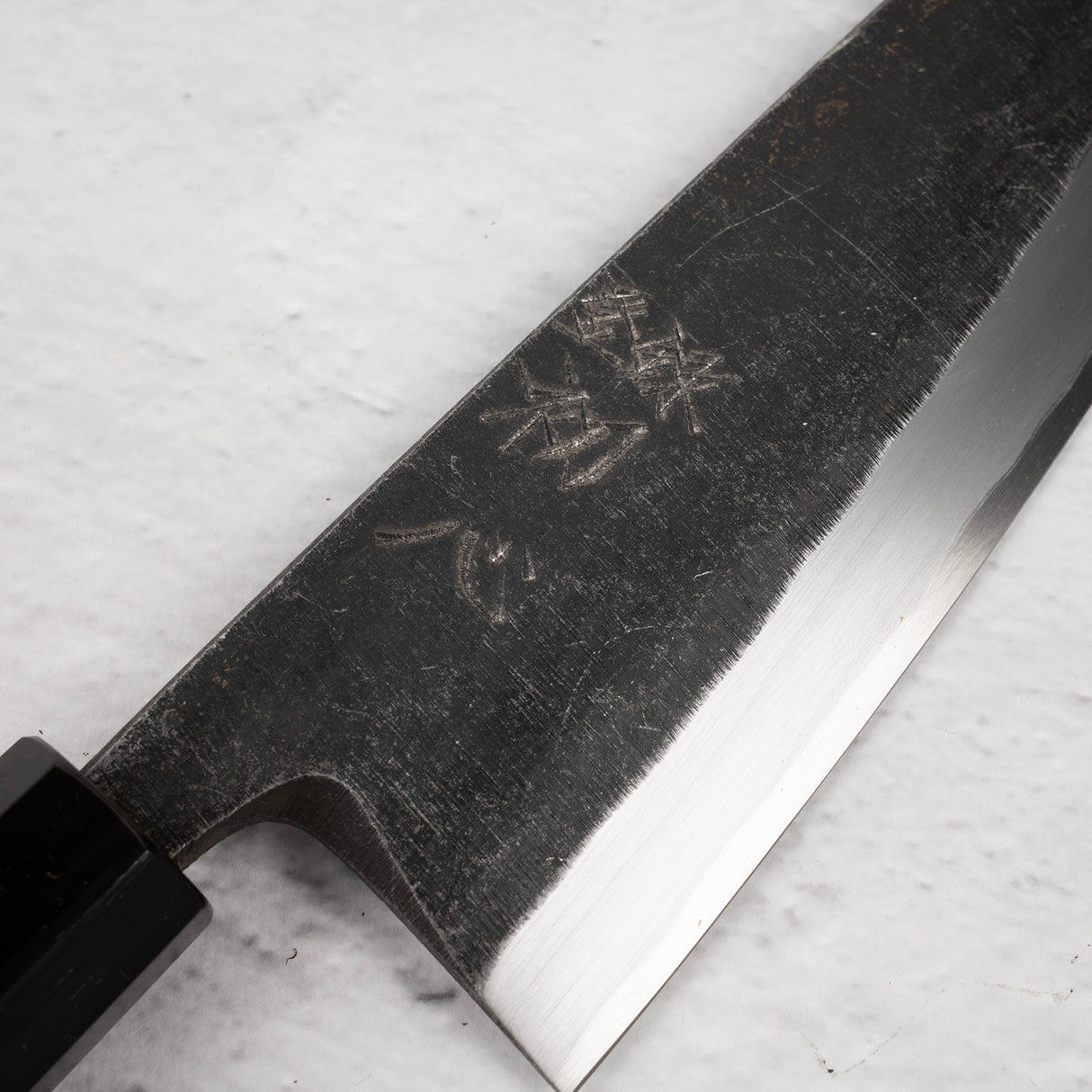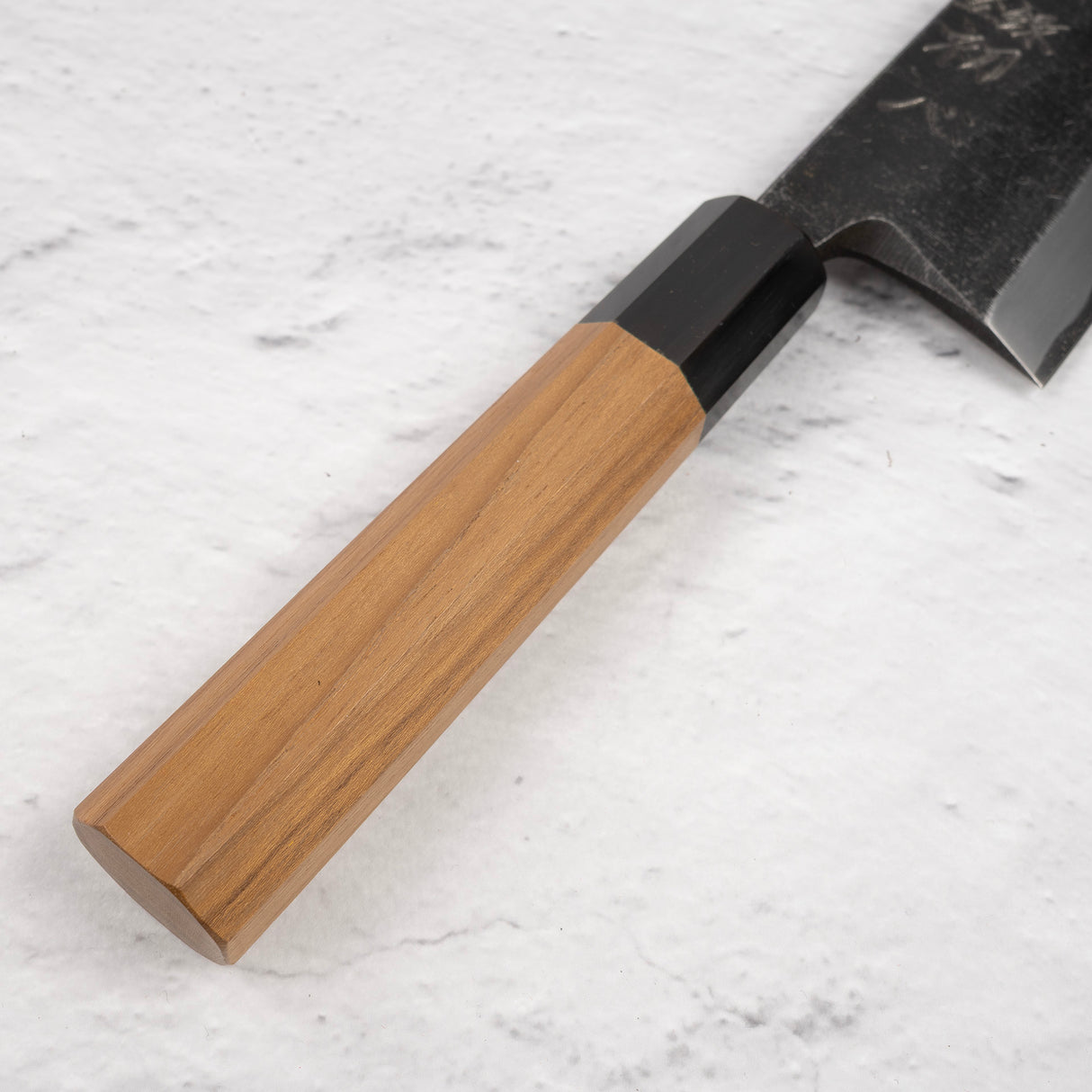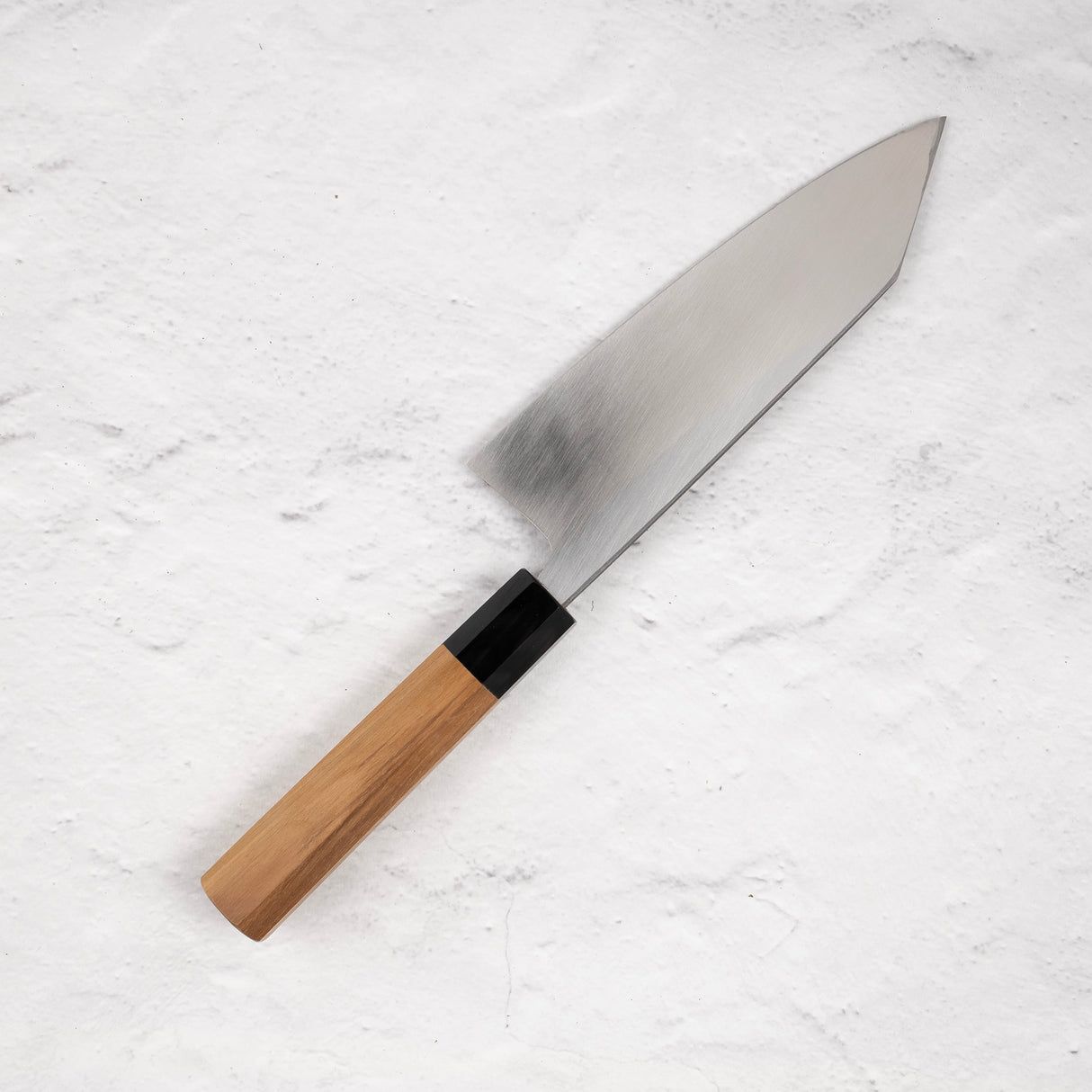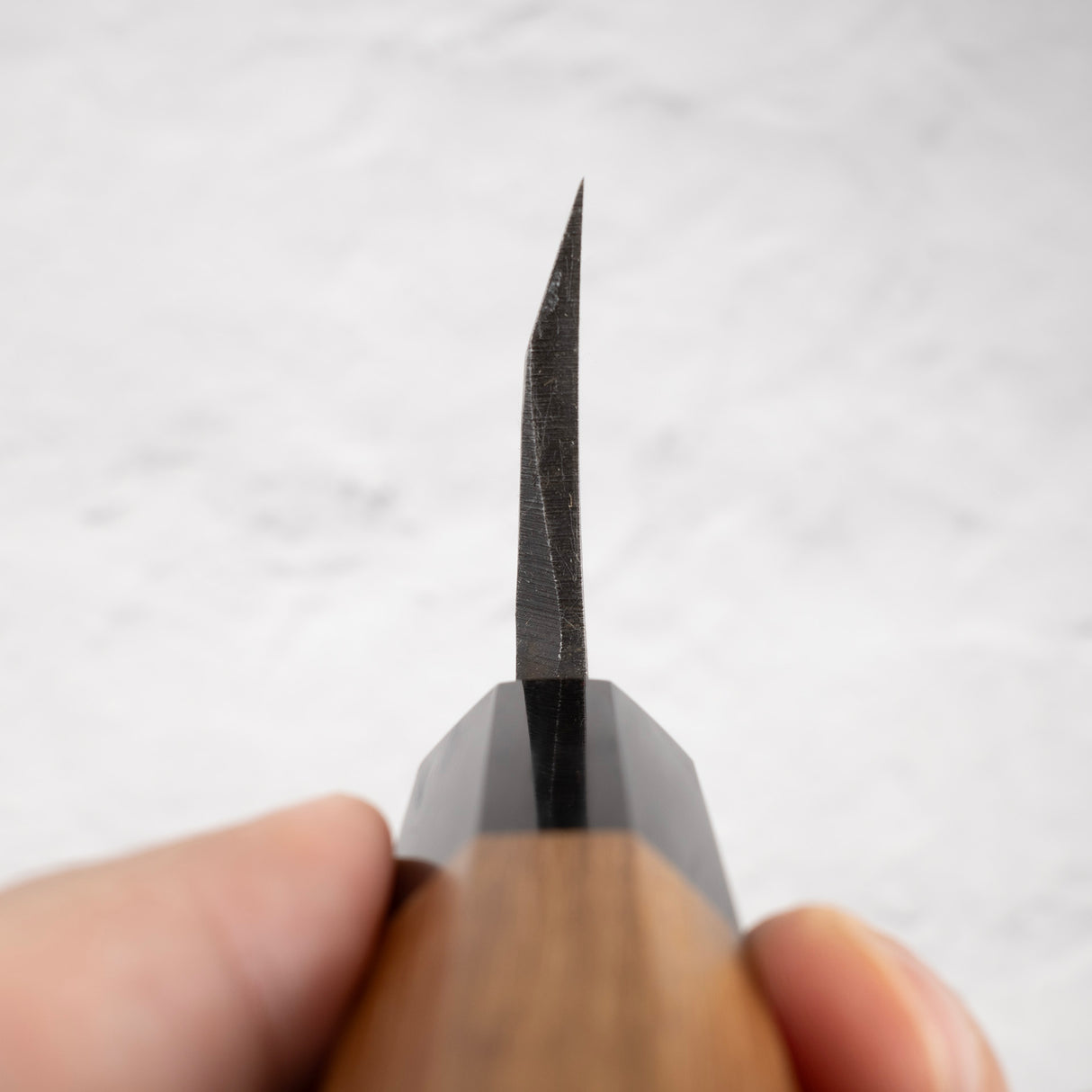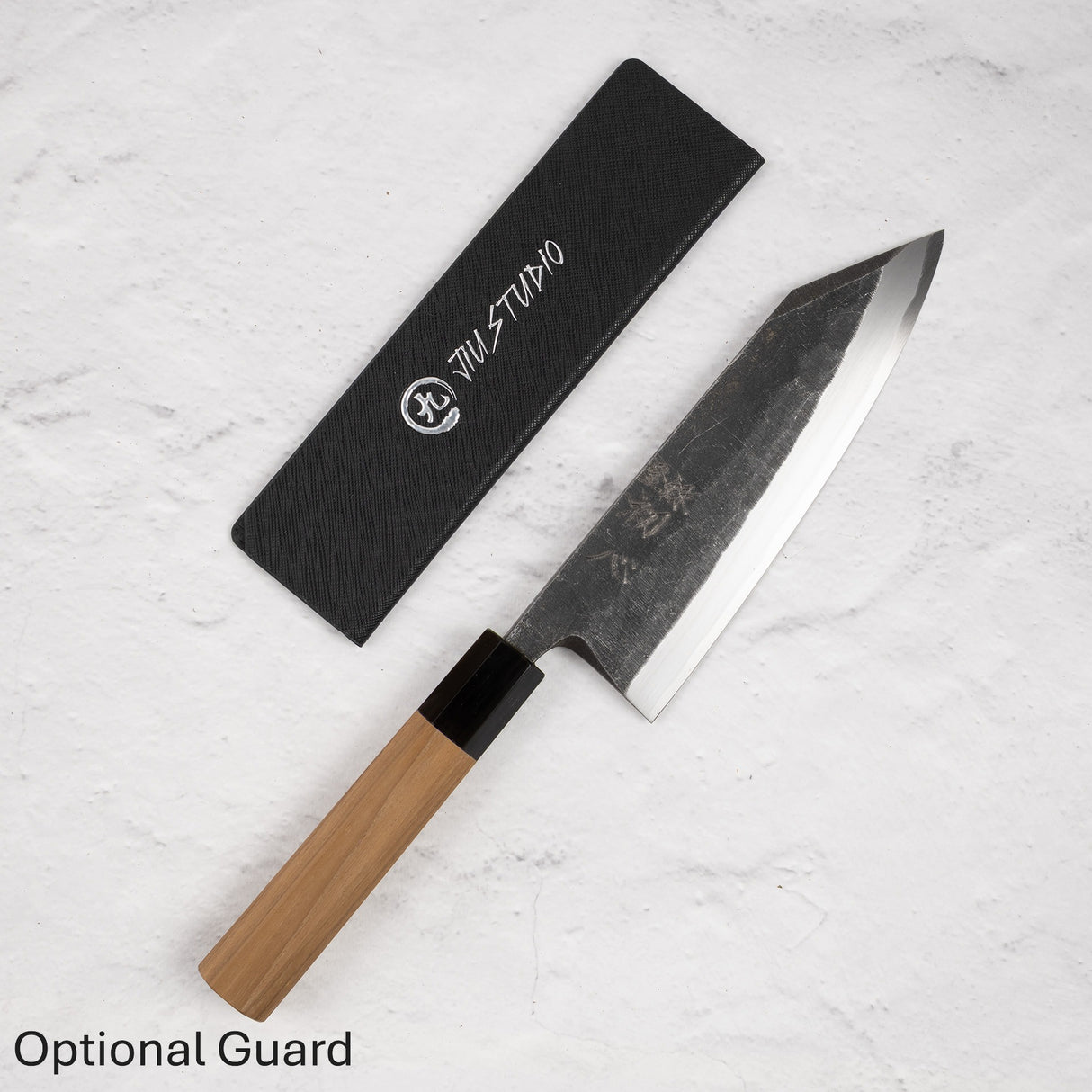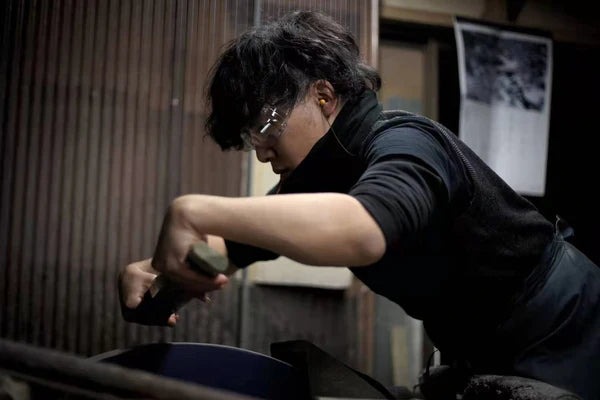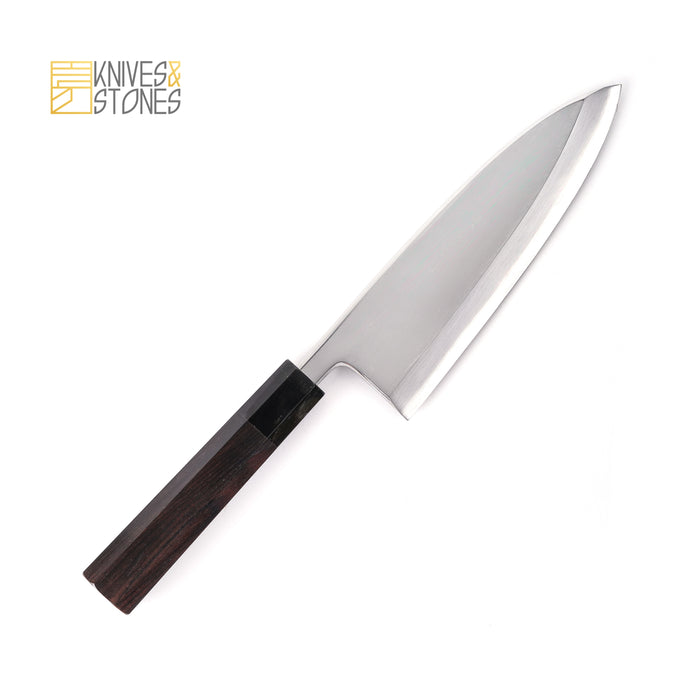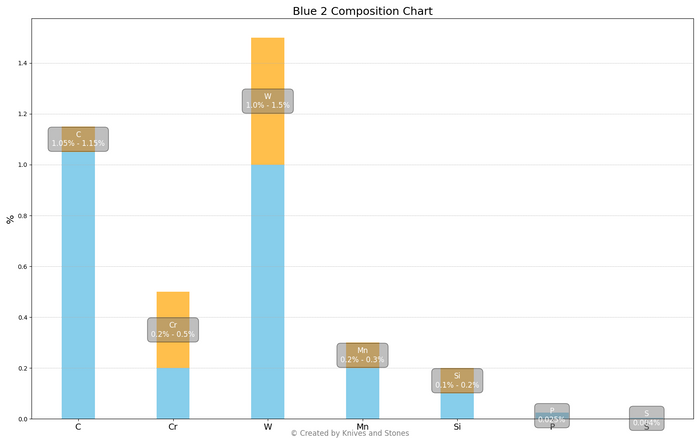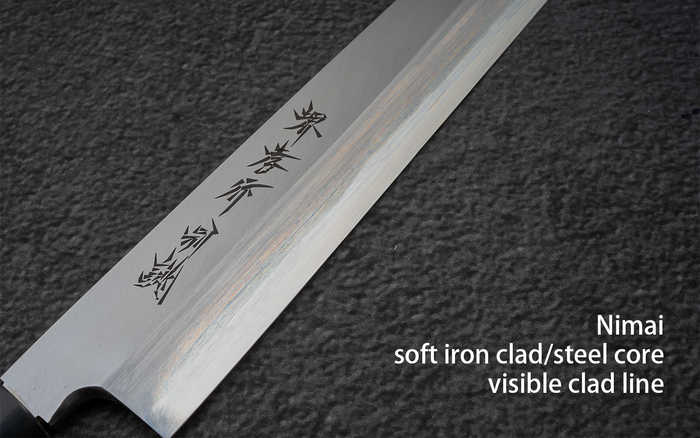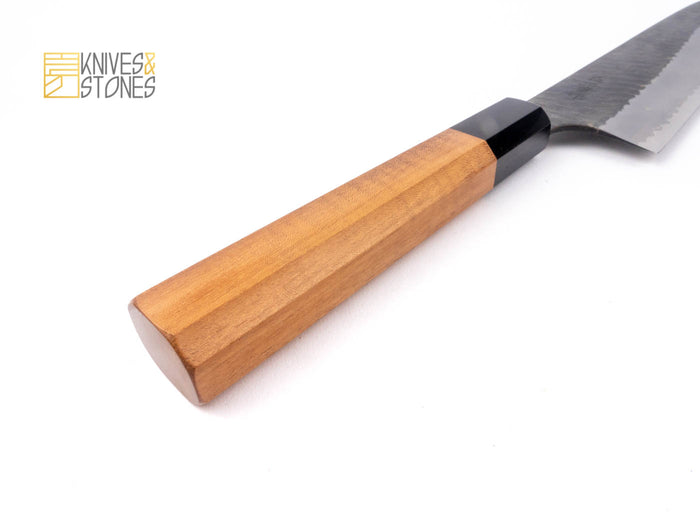Myojin Riki | 庫存單位:
MYOJ_B2KU_KDE180
明神力 x 初心白鷺 Blue 2 黑內 K-Tip Deba 180mm
售價
$6,421.00
正常價格
$7,553.00
單價
/
不可用
明神力 x 初心白鷺 Blue 2 黑內 K-Tip Deba 180mm 已缺貨,一旦有貨就會出貨。
無法載入取貨日期
Detailed Specifications
| Line | 初心白鷺青鋼2黑打單刃 |
| Profile | 出刃 |
| Bevel Type | 單斜面 |
| Weight | 347 g | 12.2 oz |
| Edge Length | 190 mm | 7 31/64″ |
| Heel Height | 55 mm | 2 11/64″ |
| Width @ Spine | 7.3 mm | 9/32″ |
| Width @ Mid | 6.0 mm | 15/64″ |
| Width @ 1cm from Tip | 2.8 mm | 7/64″ |
| Steel | 青二 / 青紙二號 | 碳鋼 |
| Blade Construction | 二枚軟鐵夾鋼 |
| Hardness (HRC) | 61 - 63 |
| Surface Finish | 黑打槌目 |
| Handle | 八角柚木黑色口輪 |
| Region | 土佐 |
| Best for |
|

| Pros | Cons |
|
|
|
Care Instruction
- Don't cut hard things! Japanese knives are brittle so bone hacking is a NO NO!
- Wash with neutral detergent after use, and wipe dry;
- Please don't wash knife with dishwasher, it will damage the wood handle;
- Be careful not to leave the knife close to a heat source for a long time;
- It is a lot more dangerous to cut with a blunt knife than a sharp knife!
- It is best to sharpen a Japanese knife regularly on a waterstone. Error: Steel nature unknown
